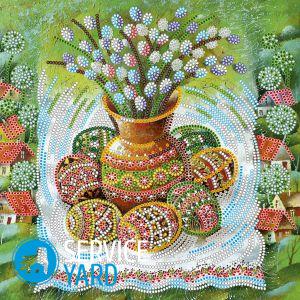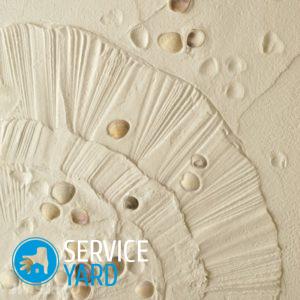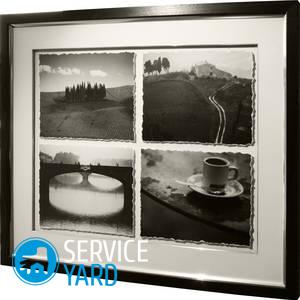How to wash cross stitch

The long-awaited moment has come and you have finished embroidering your work of art. But this is not the last step. Before putting this creation in a frame, bring your work to a flawless look, with a wash. Not sure how to wash your cross-stitch? Take advantage of our tips.
to contents ↑Why wash the embroidery?
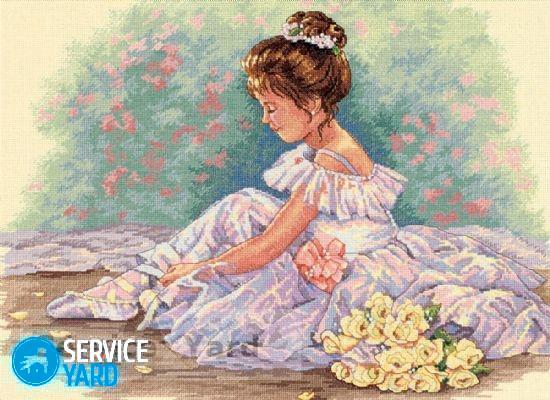 Even if it seems to you that your embroidery was not completely contaminated during the embroidery process, we strongly recommend that you wash it before placing it in a frame. Are you sure that you followed all hygiene practices in the embroidery process? But in any case, you touched the canvas with your fingers and touched the floss, thereby transferring your sweat-fat secretions to the picture.
Even if it seems to you that your embroidery was not completely contaminated during the embroidery process, we strongly recommend that you wash it before placing it in a frame. Are you sure that you followed all hygiene practices in the embroidery process? But in any case, you touched the canvas with your fingers and touched the floss, thereby transferring your sweat-fat secretions to the picture.
If you do not wash the fabric, grease stains will remain on the embroidery, which will easily attract dirt, and this will significantly spoil the overall appearance of the picture.
Important! In some cases, dirt on the product can cause the fungus to multiply in the picture, which negatively affects its lifespan.
Having washed the finished embroidery correctly, you can solve the following problems:
- wash the markings on the canvas;
- allow the fabric to lie down, smooth and thread fluff;
- flatten the fabric;
- remove dust and fine dirt from threads and linen;
- remove possible stains from the fabric on which they were embroidered.
to contents ↑Important! Fascinated by such needlework, you will certainly be interested in other interesting ideas for creating paintings and original things:
How to avoid embroidery contamination?
Always before embroidering the product, follow the simple rules:
- Wash your hands every time before embroidering.
- Do not drink or eat when embroidering so that drinks and food do not get on the fabric.
- Cover your work when you don’t embroider - so much less dust will settle on it, because this process is often laborious and lengthy.
What to check before washing?
So that all the colors do not mix in one incomprehensible color, before you wash the cross-stitch, be sure to do the following:
- Read the instructions on the package with the floss.
- Remove the adhesive plaster if you used it when processing the edges of the canvas.
- Remember if your fingers dyed threads while embroidering.
Important! If the threads you embroidered are dyed with poor-quality dye, they can fade and ruin your item.
In this case, to fix the paint, use a solution of acetic acid:
- Wet a piece of cloth with a solution and blot the area that fades.
- Take a small bowl, pour the solution there.
- Immerse the embroidered canvas completely.
- Get her out.
- Rinse well under a stream of cold water.
- Start washing.
to contents ↑Important! Acetic solution not only facilitates the washing process and helps to ensure that your handmade creation does not fade, but also enhances colors and gives them brightness.
How to wash cross stitch?
In order not to spoil your creation, for which you spent a lot of time, follow the rules of washing:
- Wash embroidery only in cold or slightly warm water, but in no case in hot.
- Treat only by hand, do not rub, do not squeeze or twist the canvas so as not to damage it.
- Use detergents that do not contain bleach so as not to spoil the color of the floss.
Want to highlight the beauty of your creation? To make it look great, follow these steps.
Stage 1. Wash
- Open a stream of cold water.
- Substrate the canvas under it.
- Pour the product with detergent.
- Rub in a circular motion.
- Wash off the product well.
- Hang to glass water.
Stage 2. Drying
- Take a dry terry towel.
- Spread a wet, embroidered canvas on it.
- Roll it up with a sausage.
- Lightly iron the towel by hand, do not twist.
- Take another dry towel.
- Repeat this process again.
Important! Do not squeeze or twist the embroidery, otherwise you may deform the product.
Stage 3. Ironing
- Take a towel.
- Expand it.
- Lay the embroidery face down on a towel.
- Leave, let it dry out a little, but not dry - the canvas should be a little damp.
- Tighten and align the embroidery so that there is no warp of fabric or pattern.
- Take the iron.
- Set the Silk knob on it.
- Transfer the product to a dry terry towel.
- Iron from the inside out.
to contents ↑Important! If your work is done on linen fabric, iron it moist immediately after washing, it will be difficult to smooth dry it.
How to remove spots from the canvas?
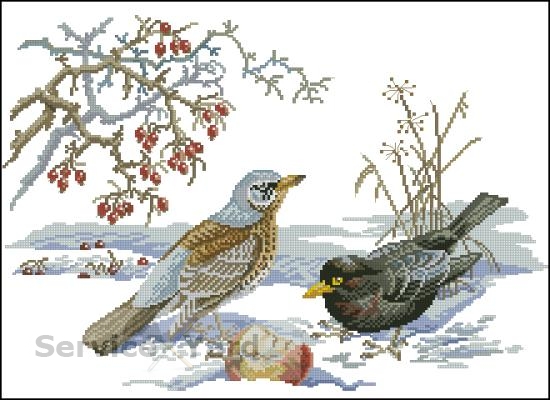 Do not know how to wash the cross-stitch, on which, during the embroidery process, you left stains, but with normal washing they are not removed? Dont be upset! This problem can also be easily solved.
Do not know how to wash the cross-stitch, on which, during the embroidery process, you left stains, but with normal washing they are not removed? Dont be upset! This problem can also be easily solved.
Method 1
Before washing an embroidery that has blood stains, do the following:
- Treat blood stains with hydrogen peroxide or ammonia.
- Type cool water into the basin.
- Add detergent there.
- Wash the canvas gently.
Method 2
If there are ballpoint pen marks on the canvas, do this:
- Take glycerin.
- Heat it and add to warm water.
- Wipe stains with this solution.
Important! Usually, all the results of creativity are displayed. But this must be done correctly, otherwise - you can get the exact opposite effect. It will be much easier for you to cope with this task if you use ready-made solutions and practical tips:
Method 3
The tea stain can be deduced in this way:
- Take a 10% citric acid solution.
- Water them a stain.
- Wash the fabric in cool water with detergent.
Important! Withdraw coffee stains with hydrogen peroxide or refined gasoline. The order is the same.
Method 4
If there are spots from a simple pencil on the canvas, follow this procedure:
- Take a soap solution.
- Rub them with pencil marks.
- Pour them on top with ammonia.
- Wash the product in cool water.
Method 5
To solve the problem of how to wash the embroidery on which there are traces of a felt-tip pen, use the following tips.
If you had a stain on the cotton fabric then:
- Take acetone.
- Heat a little.
- Treat them with stains from a felt-tip pen.
- Wash the product in cold water with detergent.
to contents ↑Important! If the stain is on a woolen fabric, then instead of acetone, use a 2% hydrochloric acid solution. The procedure is similar.
Stock footage
We hope that our tips have come in handy and their proper use has benefited you. Surely now your work of art will please the eye for decades.




